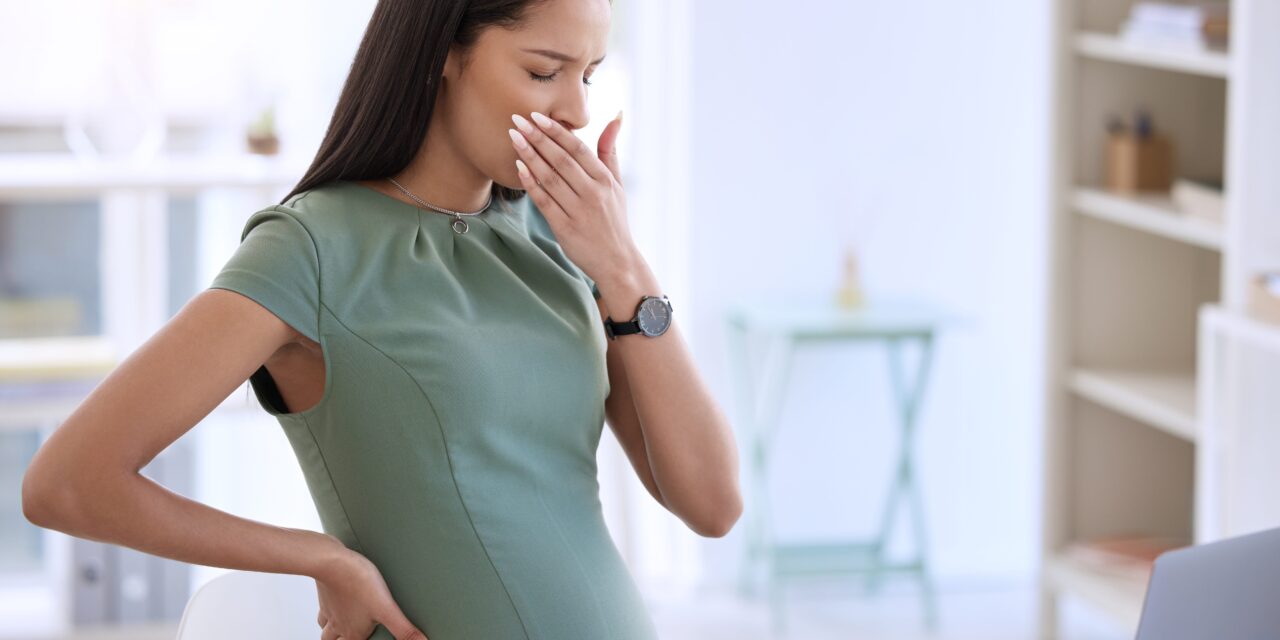Back pain when sneezing
Have you ever a sudden sharp pain from your back, after sneezing?
Wait a minute-you’re not the only one. Sneezing can sometimes cause unexpected back pain, which is at once dangerous and irritating. What caused you to sneeze on the day should be noticed. If you have continuous backache or have experienced this once before, it is important that you understand the causes of this pain and how to get rid of it.
In this post we will show practical steps and tips to help you manage and treat back pain after sneezing. Whether it’s understanding the cause or implementing effective treatments, you can rest assured that this article has you covered.
Why does it hurt when I sneeze? Common Causes
The Anatomy Behind It
Sneezing is a natural reflex designed to clear the nasal passages of irritants, but the forceful contraction of muscles involved can sometimes lead to back pain. When you sneeze, the muscles in your chest, belly and back contract quickly and with great force. This sudden motion may over-strain or damage ligaments and muscles in your back, causing pain.
Muscle strain:
Muscle strain and swelling are the most common causes of back pain when sneezing. The act of sneezing is a reflex response that involves sudden, forceful contractions for many muscles–including muscles in your back. These contractions can aggravate existing injuries or give rise to new ones, causing localized pain and discomfort.
Herniated disk:
Another common cause of back pain after Muscle strain is a herniated disc. A herniated disk occurs when the soft cushion between the vertebrae of your spine slips out of place, putting pressure on nearby nerves and causing pain. Sneezing can increase pressure on the disks in your spine, causing them to be even more at risk of slipping or bulging out.
Arthritis:
If you’ve got arthritis in your back, then sneezing may cause severe pain. This is as a result of inflammation and stiffness inside the joints. The sudden movement and force of sneezing can exacerbate these symptoms, causing back pain.
Vertebral compression fracture:
In extremely rare cases, sneezing leads to vertebral compression fractures of the spinal cord. These fractures happen when one of the vertebrae in your spine collapses because it has bone that weakens or gets bridle. Sneezing can put stress on the spine, and may lead to compression of it ultimately fracture.
Sciatica
Sciatica refers to irritation of the sciatic nerve. This nerve runs from your lower back down through your legs. When this nerve is irritated or compressed, it can cause sharp pain in your back and down one or both legs. In some cases, sneezing can make the situation worse by putting pressure on the spine and further irritating the sciatic nerve
Pre-existing Conditions
As you can see, a condition such as a herniated disc or strained muscle will only be made worse by sneezing. The jerky motion of a sneeze can disturb inflamed areas, increasing the pain. People suffering from chronic back issues are more susceptible to back pain resulting from normal activities, including sneezing.
Poor Posture
Another contributing factor is poor posture. If you often slouch or have bad posture, then your muscles and spine are already under strain. A powerful sneeze can be the straw that breaks the camel’s back: you get back pain. Maintaining good posture is vital for reducing the chances of injury when you make sudden movements like sneezing.
What Are the Symptoms of Back Pain After Sneezing?

With a sneeze, you suddenly got a sharp back pain like electric shock through the body. As to the Symptoms of backache after sneezing, these vary from person to person. Some people can experience a mild dull ache; others may feel knife-like pain or muscle spasms. It is crucial to be aware of how your body responds after sneezing and to record any symptoms:
Intense Back Pain: The sudden, sharp pain experienced after sneezing is a primary symptom of back pain in this scenario.
Stiffness: You may feel stiff or immobile in your back muscles, making it hard to move or bend over.
Muscle spasms: Others may get muscle cramps and hand/foot sensations as a result of sneeze — uncontrolled telegraphing of a message to the muscles that was once a voluntary action from your cons psyche to be squelched for bodily health’s sake.
Radiating Pain: In some cases, the pain might radiate down to your legs or up through your neck and shoulders.
Numbness or Tingling Sensation: If you have a herniated disc, your back or legs may feel numb or tingle after sneeze.
If you experience any of these symptoms after sneezing, be sure to see a doctor for the right diagnosis and treatment.
How to treat back pain after sneezing
Rest and Avoid Strain
The first thing you should do is get some rest. Don’t do anything that may make it worse – for instance avoiding tight clothes and heavy lifting. Your back needs healing time in order to avoid further damage.
Apply Ice or Heat

Both ice and heat can be effective for treating back pain. Ice can help to reduce inflammation and numb the pain, especially for the first 48 hours. Then applying heat could well relieve aching muscles and enhance blood flow to any area where you’re feeling symptoms of discomfort.
Over-the-Counter Pain Relievers
Certain over-the-counter pain relievers, such as acetaminophin and ibuprofen, can ease pain and inflammation. Always follow the dosage instructions on the label and speak to your healthcare provider if you have any concerns.
Long-term Strategies for Back Health
Physical Therapy and Stretching
Physical therapy may be used to strengthen the muscles that support your back, bringing them into perfect working order. Your physical therapist will give you specific exercises to do regularly so that the discomfort of your back lessons and becomes less difficult. Such practices could include stretches for an area in acute pain. Massage Therapy
Massage Therapy
Regular massage can also be effective in managing chronic back pain and preventing injuries. Massage helps to calm the tense muscles, improve circulation and heal the affected area.
Maintaining Good Posture
So as previously mentioned, bad posture can lead to a lot of back pain. After all, no manner of slouching is an act meaningful to the future not to mention your health. It’s important to keep your back aligned and your spine properly positioned particularly when sitting for long periods of time.
Regular Exercise
By regularly exercising, the muscles that support your back will grow stronger and reduce chances of injury. Activities such as walking, swimming and yoga This can be particularly helpful. However, strengthening your core muscles enables adequate support to be given to your back when you do feel like sneezing
Maintain a Healthy Weight
Carrying some extra weight can put strain on your back muscles and spine. So, try to maintain a healthy weight with good diet and exercise. This may reduce that pressure and your chances of having back pain.
The Importance of Sleep For Back pain
Sleep Positions
The position in which you sleep can make a big difference in your back health. Sleeping on your back or side with a pillow between your knees maintains the natural curve of the spine.
Quality Mattress
Get a quality mattress that will give your back suitable support. A mattress is too soft, or one too hard could cause the trouble in your back to continue or worsen.
Consistent Sleep Schedule
Incompatibility with your life is the most definite benefit to keeping a regular sleep schedule. To sleep better overall, step up use and set as your goal 7-9 hours of sleep a night in order to afford time for one’s body to rest and recover.
Foods That Help Reduce Inflammation
The Alpha-linolenic Acid
Omega-3 rich foods, such as salmon, walnuts and flaxseeds, have powerful anti-inflammatory effects. This can serve to reduce back pain.
Fruits and Vegetables Rich in Antioxidants
Berries and kale, spinach and other fruits or veg–these are foods that bite back at the cause of most chronic inflammation.
Whole Grains
Whole grains such as brown rice and oats provide nutrients that can prevent inflammation and that can help you maintain overall health.
What vitamins are best for back pain?
Vitamin D
Vitamin D is important to bone health. Sunlight exposure and foods containing fortified milk and fish can help you maintain adequate Vitamin D levels.
Relaxants for Muscles
Magnesium will relax the muscles, reducing spasms and pain. Foods rich in magnesium include avocados and spinach and almonds.
Curcumin
Turmeric contains curcumin, a compound that has powerful anti-inflammatory effects. By adding turmeric to your diet or taking it as a supplement you can help manage back pain.
When to Seek Medical Attention
Rest and Avoid Strain
If your back pain will not go away for over a week or gradually keeps increasing it is necessary to see a health care professional. This persistent pain may signify some type of more serious underlying condition that needs medical intervention.
When Movement Is Difficult
If difficulties in moving or feeling and movement in the legs occur, immediately contact a doctor. These symptoms could signal nerve compression or some other serious condition that requires timely treatment.
History of back problems
If you have a history of back problems or recent strain injuries, don’t hesitate to consult your doctor. They can offer attention with treatment tailored to your individual physiology and personal history.
Final thoughts
When sneezing triggers back pain, it can be alarming but manageable. By knowing the causes, taking immediate steps to alleviate the pain, and developing long-term programs, relief becomes possible and will in its turn improve overall back health. Don’t ignore persistent pain—have it seen by a healthcare professional. For ongoing aid and counseling, consider making a session with a physical therapist or chiropractor. Your back stands to benefit from the most expert care available, so book today and be on the road to being pain- and worry-free.

